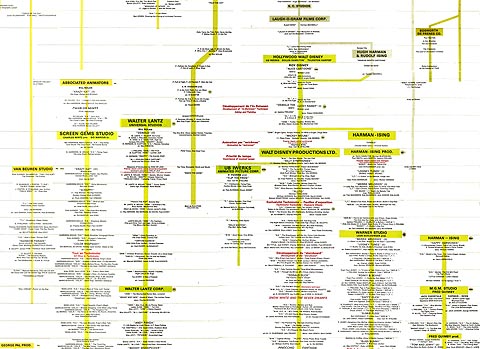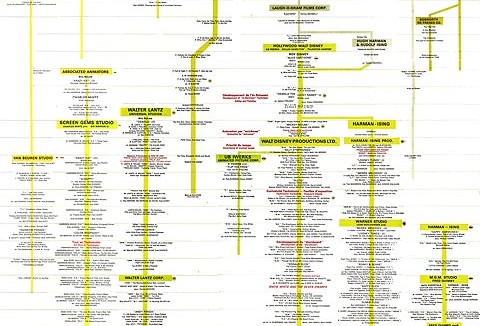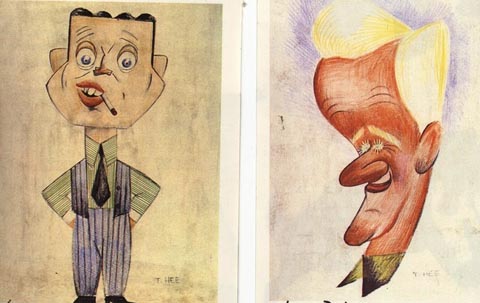

Two Incredible Documents: NFB Animation Chart and T. Hee Caricature Notes
A little bit about two incredible documents that have turned up online recently:

NY animation director Michael Sporn shares scans of a 1967 poster designed by André Martin that documents the early history of American animation from 1906-1941. It’s eye-opening to see the diverse strands of American animation organized neatly into a chronological hierarchy. What would be really amazing though is if someone adapted this chart into an app for digital tablets so that a user could click on names of studios, artists and films to see video clips, film stills, and additional documentation.

Canadian animation director Jamie Mason shares a treat he found on eBay: notes from a Disney lecture about caricature presented by T. Hee in April, 1939. The notes are unedited and slightly jumbled, but the information contained within sheds glorious insights into Hee’s approach to caricature. At the end of Jamie’s post, he includes copies of some of Hee’s caricatures, including four drawings that are discussed in the lecture–Bill Tytla, Ben Sharpsteen, Norm Ferguson and Lou “Whitie” Debney.
Hee, a disciple of Miguel Covarrubias, explained in the lecture that he viewed caricature not as drawing but as the “art of observation and study.” The personality of a person influenced how he drew people. For example, in discussing one caricature, he said that, “There is nothing direct – I felt everything should be going off at some angle, because Dick is that way. If you ask him a point blank question, he will evade you with some humorous remark.”
Another part I found interesting is when Hee talked about how he doesn’t like to caricature people in person or with any reference:
“I draw always from memory. I find if you draw [a] portrait or caricature of someone, when they are in the room, you are drawing what your eye sees, and a caricature is a mental image — an impression. Your eye makes no impression at all. Your mind makes the impression so if you want to make shorthand notes and sketches of a person, it is perfectly alright…because you want to put down a nose if it has a peculiar twist like that and maybe the eye to give you the effect of the thing, and then if you put that thing away and don’t look at it, because you went through that action, you will have it in your mind and repeat it again. This is like learning a foreign language — like a piece of music. You should never take any notes, and you should do it all mentally.”
